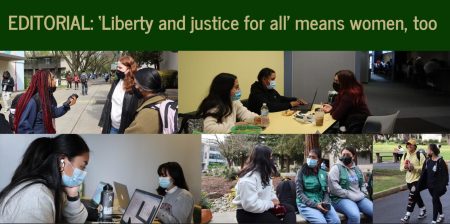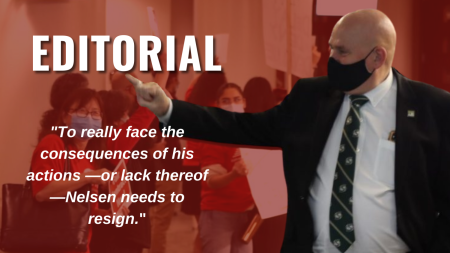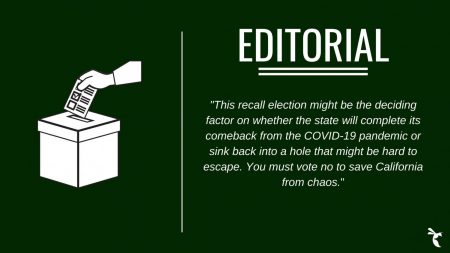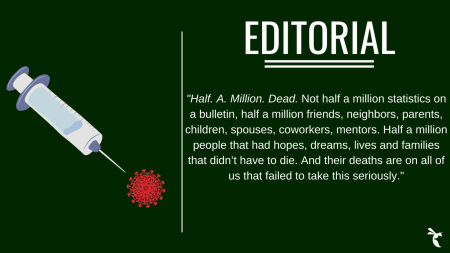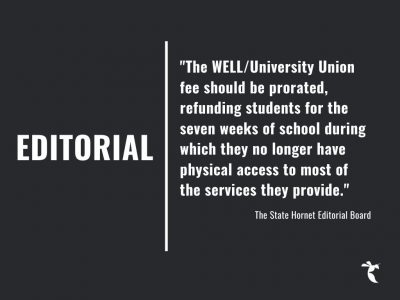EDITORIAL – Sac State ENS text: Where U at?
October 19, 2011
Shootings, floods and fire – all disasters the Emergency Notification System will alert people via text message so precautions can be taken. Thankfully those things do not happen often on campus, so the odds of people getting one of those messages are low.
Or there could be multiple fires on campus and ENS text messages would not be sent anyway.
Two buildings on campus had to be evacuated on campus due to fires on Thursday, yet the text warning never came. Students who left their belongings in Mendocino and Mariposa halls probably would have liked a quick alert so they could grab their stuff and get the hell out of the buildings.
The ENS website lists fire as one of the scenarios in which a message would be sent. Well, the campus just had two of them at nearly the same time.
“There was not an imminent danger,” said Sacramento State spokeswoman Kim Nava.
Phil Garcia, vice president of Public Affairs, said in an email sent to everyone on campus that a major, more imminent threat to public safety would cause an ENS message to be sent out. The scenarios listed on the ENS website are repeated in the email, but fire is strangely not.
Does a building have to be completely engulfed before a message is sent out? How about four buildings with manageable fires at the same time? A toxic spill, an armed individual and one fire at the same time?
The email also said the threshold for sending an ENS system alert is under review. This is a good thing – a time to take whatever the threshold is and simplify the process.
Fiery doom should be added back to the list of scenarios; a fire contained in one room could unexpectedly spread.
Spending time to determine whether or not the danger is imminent is time wasted. Send the warning first, followed by updates later.
Anything leading to people most likely getting injured, maimed or killed should be cause for alert and it needs to be issued with haste. If a false alarm happens, it is not a terrible thing. Issuing an alert too late is a terrible thing.
Having a text message alert system sending out nothing when fires are confirmed is not particularly useful or encouraging.
Updates were posted to the university’s Facebook and Twitter accounts, but what are the odds someone is staring at a screen, logged onto one of those two sites and receives official messages from the school at the exact moment a warning is posted?
The odds are better than someone using their SacLink email to check for warnings, but that is not saying much considering many students rarely check their SacLink emails anyway.
An estimated 20 percent of students have signed up to receive ENS text messages.
The best way to reach as many students as possible quickly is the system in place, but it has to actually be used. Twenty-seven notification loudspeakers were installed on campus to issue warnings along with ENS messages in spring of this year. Silent speakers serve no one.
What would be the harm in sending out an alert when buildings are on fire? If it is a small fire and no one is in danger, people are going to need to leave the building anyway. If it is a big one, people cannot afford to wait around.
Had the ENS message been sent out, it could have instructed students not only to leave the buildings, but also to not stand around the buildings and watch them burn so no one would be in the way of firefighters. People on their way to classes in Mendocino and Mariposa halls could have saved time instead of heading to potentially canceled classes.
The decision not to send text messages and make announcements over the loudspeakers was a mistake. Hopefully, the Crisis Communication Working Group in charge of reviewing the policy will advise school officials to send the texts due to this incident.
Campus officials cannot prevent disasters from happening. They clearly can use all of the tools they have at their disposal – not just some of them – to make campus as safe as possible.
































































































































